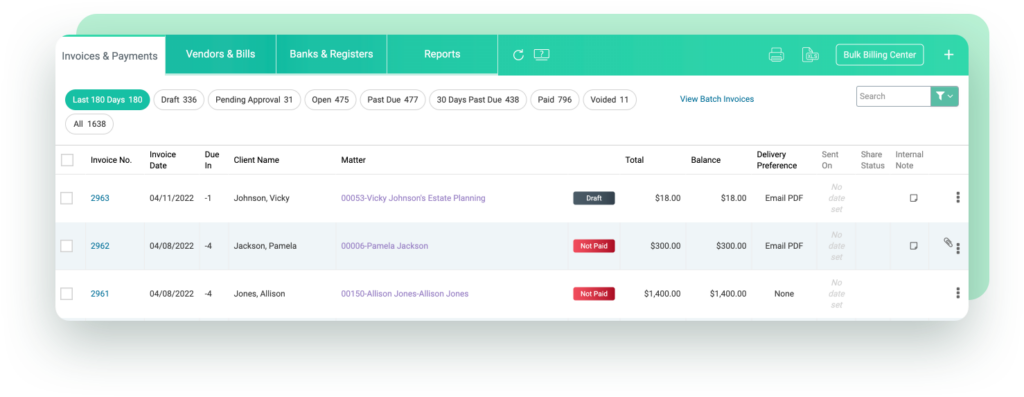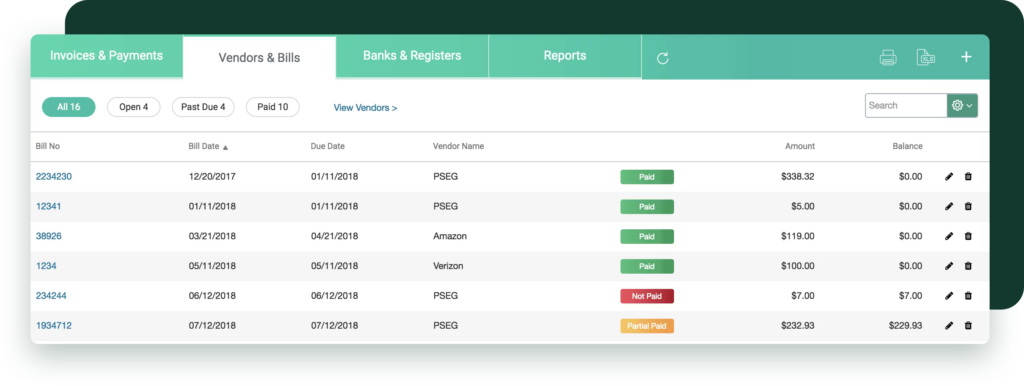In order to monitor how a firm is doing financially year to year, every law firm should maintain an internal budget/forecast.
No business owner wants to deal with a financial emergency due to a lack of planning. To monitor how a firm is doing financially year to year, every law firm should maintain an internal budget/forecast.
A law firm budget/forecast report provides the owner a monthly snapshot of how the firm is doing at least yearly with monthly updates. Firms usually budget for one year, and a forecast is the budget and actuals. So, in April, a firm will display three months of actual data and nine months of budgeted data.
A forecast is a continually changing report, and a budget is prepared annually. Since each year is different and may have different expenses, it is unrealistic to use the same forecast year after year. A new annual budget of the firm’s expenses and revenue should be prepared at the end of each year, a month or so before the arrival of the new fiscal year.
Any owner of a firm should welcome this proven method of eliminating unwanted surprises that can be avoided by merely properly recording expenses and revenue. Unfortunately, most firms are on a modified cash or cash basis accounting platform instead of an end-to-end legal practice management platform. Essentially, revenue and expenses are not recorded unless they have been received and paid.

Manage invoices and payments in CARET Legal
How To Get Started
Most legal time and billing applications offer accounting software to provide the required information needed to build and maintain a budget. If your time and billing provider does not offer any assistance or solutions, a budget can easily be prepared using a spreadsheet for the short term.
An attorney should not have to spend any more than 1-2 hours a month reviewing budgets and forecasts. It makes sense to delegate preparing and updating the forecast/budget to a detail-oriented person, preferably a bookkeeper or CPA.
Revenue
In getting started, it’s important to identify how much revenue (cash receipts) the firm anticipates every month. If the firm employs paralegals or other billers, it is important to incorporate those billed fees as well.
Every month, the actual cash receipts should be recorded while budgeted ones may require an adjustment. For instance, if the firm acquires a new client, the budgeted revenue should be increased. And in turn, if the firm loses a client or the client no longer has a legal need, the budgeted revenue should be reduced.
For any new entity, look at current clients to determine what bills are expected to be generated. It is also important to use a calculated realization rate when budgeting revenue. Many firms realize 85% cash receipts of invoices.
Expenses
Real Estate
It is best to put expenses into categories so they can be benchmarked against industry norms. For instance, real estate expenses should be in their own category and should not be more than 7% of revenue. In the real estate category, include rent and any other associated operating expenses. For instance, if the firm needs to reserve a conference room space regularly and is charged separately for that rental, it should be included in the real estate category. Or, if the firm is paying a mortgage or other real estate taxes, include that as well.
Employees
Employee expenses are usually the largest expense a law firm incurs. In some firms, it can be more than 40% of revenue if non-equity partners are considered employees and not partners. In this category, it is important to list every employee’s salary, plus out-of-pocket expenses such as medical insurance. If an employee is being recruited, include that new employee’s salary along with any recruiter fees incurred. Make sure that year-end bonuses and annual raises are included as well.
Creating a budget, along with regular forecast reviews, is a great tool for owners to view the health of their business and to safeguard against any potential business issues.
Technology
A firm can expect to spend approximately 5-8% of its revenue on technology. And with technology expenses increasing with new hybrid work models, it’s important to include all cloud expenses, telephone, internet, and outsourced IT support.
Marketing
Another factor to take into consideration when developing a budget is marketing expenses for your firm. Include all networking groups, advertising, media costs, website maintenance and professional events in this category. When attending a conference, be sure to keep accurate detailed records to ensure all tax-deductible expenses are recorded. The average firm is spending about 5% of its revenue on marketing. This varies, however, according to the type of law a firm is practicing. For instance, a personal injury firm probably spends more than 25% of its revenue on its marketing efforts.
Professional Costs
A category listing all insurances, licenses and professional development should be included. A firm wants to ensure that professional liability and cyber insurance are within the average cost in the industry. Make sure any professional development (courses, coaching, etc.) is included. This expense usually accounts for 2-4% of revenue.
Miscellaneous
Other expenses can be combined such as automobile, gas, car insurance, office supplies, legal research, postage, and bank charges. These miscellaneous expenses should not be more than 5% of firm revenue.

Vendor and bill management in CARET Legal
Review
During a monthly review, budgeted revenue should be compared with actual cash receipts and budget adjustments should be made when needed. Expenses should be listed according to categories and benchmarked against industry norms. Any perceived issues should be investigated. A copy should be sent to the firm’s accountant, and when contemplating a large expense, the budget/forecast and the accountant should be consulted to determine an appropriate time for the purchase.
“Set it and forget it” is not a viable business model in today’s ever-changing competitive environment. Therefore, creating a budget, along with regular forecast reviews, is a great tool for owners to view the health of their business and to safeguard against any potential business issues.
Written by CARET Legal partner, Gail Ruopp. Gail Ruopp has acquired more than 25 years of professional experience in senior law firm management, initiating best practices in administrative operations, including: financials, accounting, lateral recruiting, personnel, day-to-day operations, systems management, and firm marketing.
